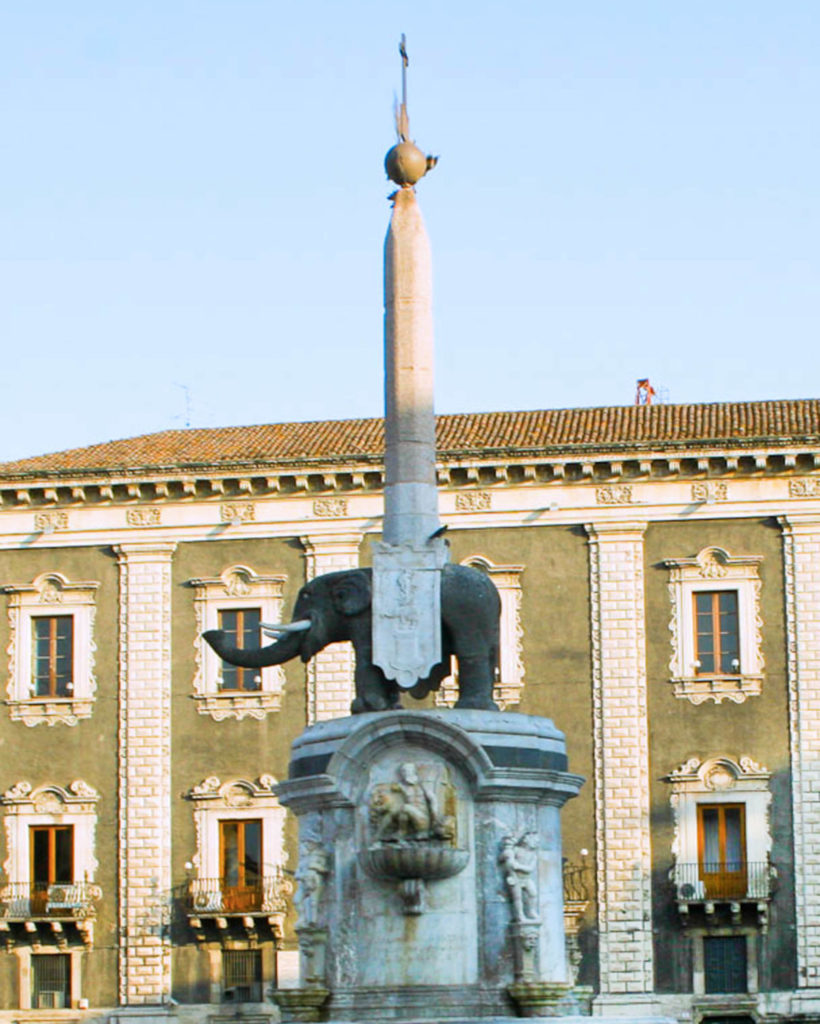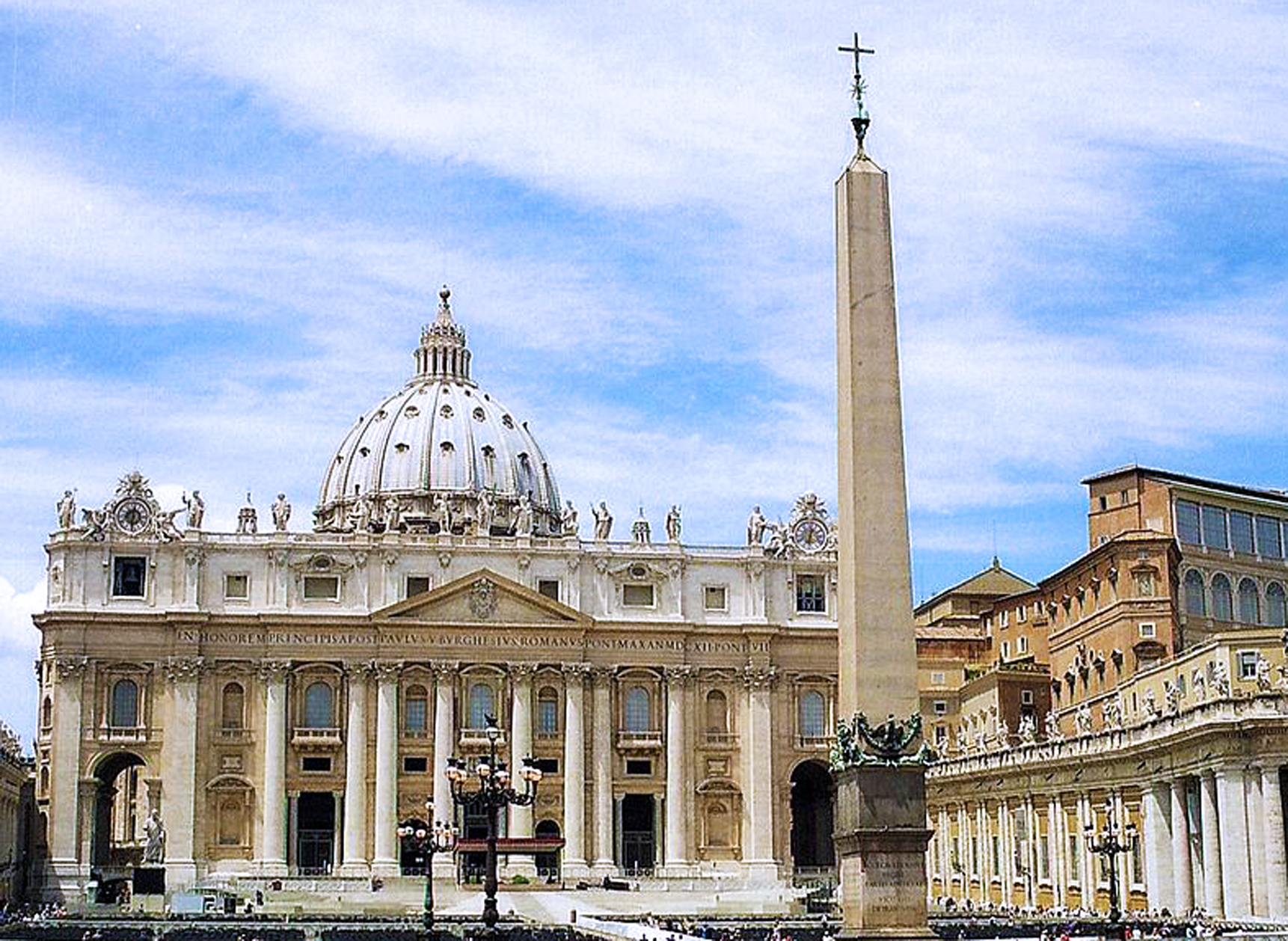When visiting Rome, one is often struck by the number of ancient obelisks found in the city. Much like our interest in Ancient Rome, the Romans developed an interest in Egypt. Although initially the interest was purely financial, collecting Egyptian artifacts has long held a particular fascination to the Romans and later Italian City-States. When visiting Italy today, you could be excused for not believing that there are more ancient Egyptian objects in Italy than in Egypt itself. This is certainly the case when it comes to the obelisks in Rome, which total an even dozen, plus the massive one in Vatican City’s Saint Peter’s Square.
It is hard to miss the structures around the Eternal City, which have more ancient obelisks than the entire country of Egypt. Each has a story to tell, but before gracing Rome, eight of the massive objects had to be carefully moved and shipped across the Mediterranean, a Herculean task in itself. For monolithic structures created from a single slab of granite, it was a monumental feat 2,000 years ago.
In the days of the Roman Empire, three specially built ships were constructed just to carry obelisks. Each was manned by 300 oarsmen. We only know of these vessels through the writings of Pliny the Elder, who described how two rectangular ships were built and connected to each other by longitudinal beams. The obelisk was then fastened to the beams and held firm underwater. A third ship was tied to the front of the two ships and was tasked with steering the flotilla. How they managed to transport something as massive as the Vatican Obelisk underwater is incredible to fathom, both literally and figuratively.
Standing 84 feet tall and weighing over 325 tons, the VATICAN OBELISK was brought to Rome during the reign of the notorious Gaius Caligula in 37 AD. Unsurprisingly, given the Emperor’s penchant of using public funds for personal extravagances, he had the obelisk erected in his gardens. It remained there for 1,500 years until Pope Sixtus V ordered it moved into Saint Peter’s Square. Standing the obelisk upright was also an enormous undertaking and was described in the March 18th edition of the Italian Tribune.
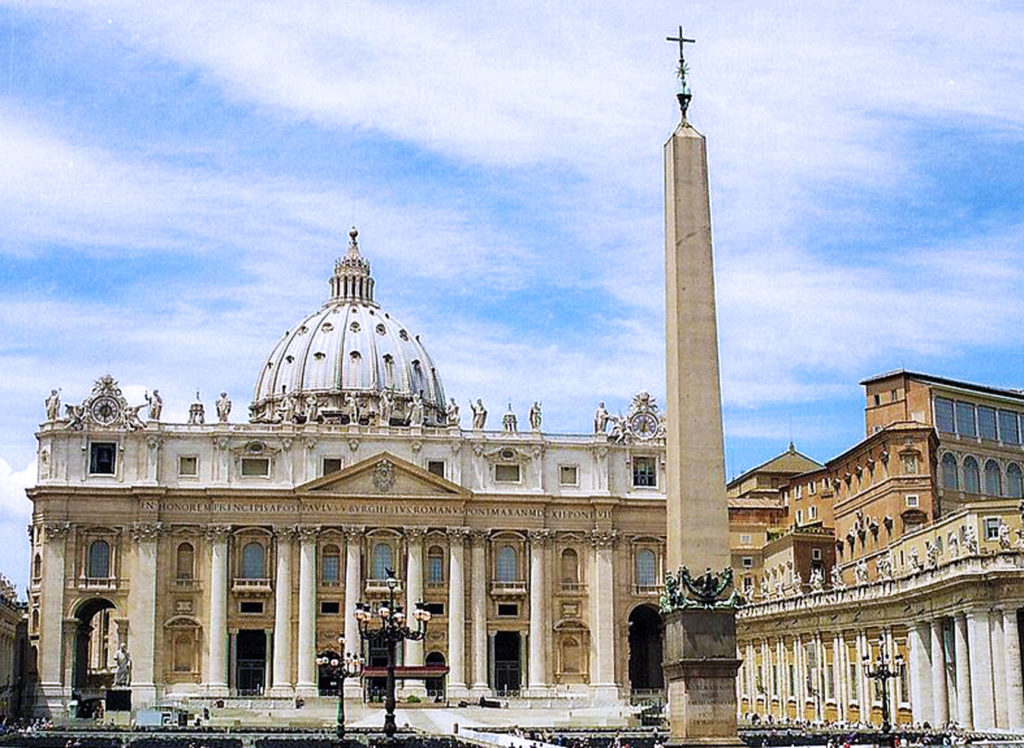
The LATERAN OBELISK is the largest standing ancient Egyptian obelisk in the world. It was originally 105 feet tall and weighed 450 tons, but after collapsing, it was re-erected 13 feet shorter. It is located in the square across from the Archbasilica of St. John Lateran. The red granite obelisk was made around 1400 BC in Karnak, Egypt. Roman Emperor Constantius II had it moved to Alexandria in the early 4th century AD and in 357 AD, had it shipped to Rome and erected at the Circus Maximus. The obelisk collapsed sometime during the 5th century and was buried under mud. It was excavated and restored in the late 1580s. By the order of Sixtus V, it was topped with a Christian cross and installed in its present location near the Lateran Palace.
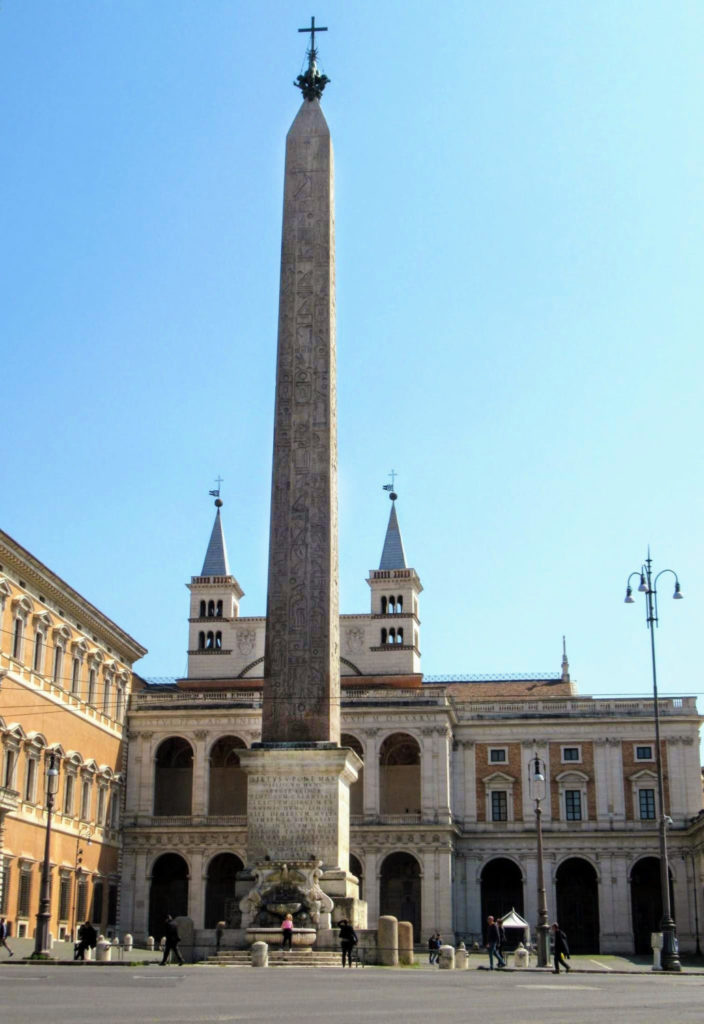
The FLAMINIO OBELISK in the Circus Maximus was initially commissioned by Ramesses II in 1280 BC. After Emperor Augustus defeated Cleopatra and Mark Antony, he ordered the granite obelisk in Heliopolis to be brought to Rome. It remained standing until the sixth century Gothic War, when it fell, broke into three pieces and was subsequently buried. It remained concealed for a thousand more years, until it was excavated in 1587 and moved to its current location in the Piazza del Popolo. The obelisk is 67 feet tall, but with its base and cross reaches 100 feet in height.
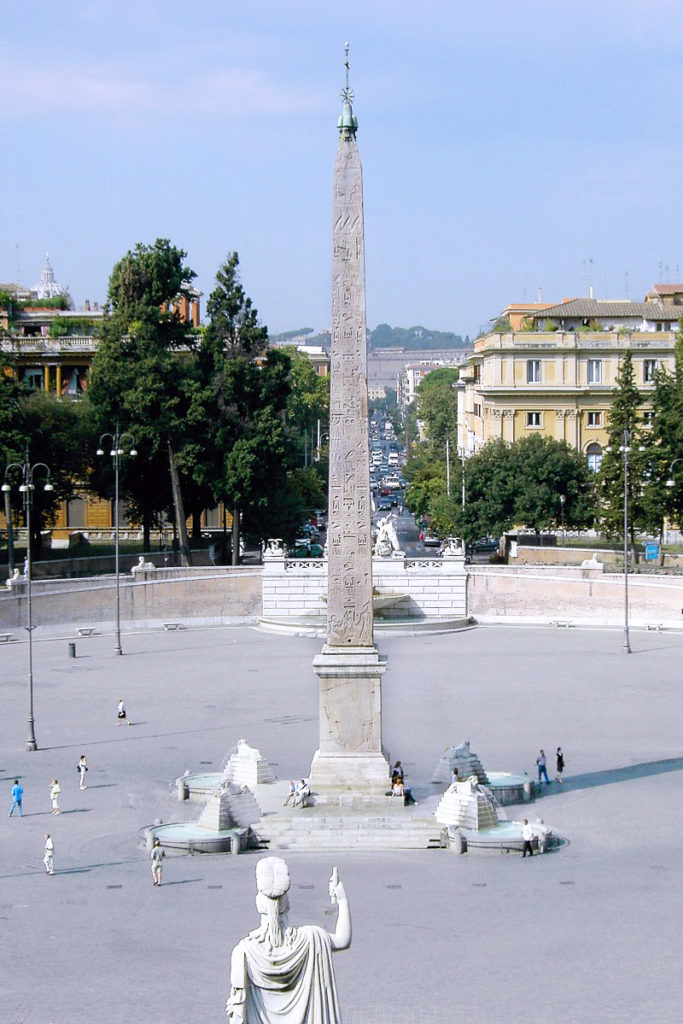
The OBELISK OF MONTECITORIO, also known as Solare, dates from 589 BC and was brought to Rome during the same period as the Flaminio Obelisk. It is now in the Piazza Montecitorio and stands 71 feet tall, but towers to 111 feet, including the base and the globe.
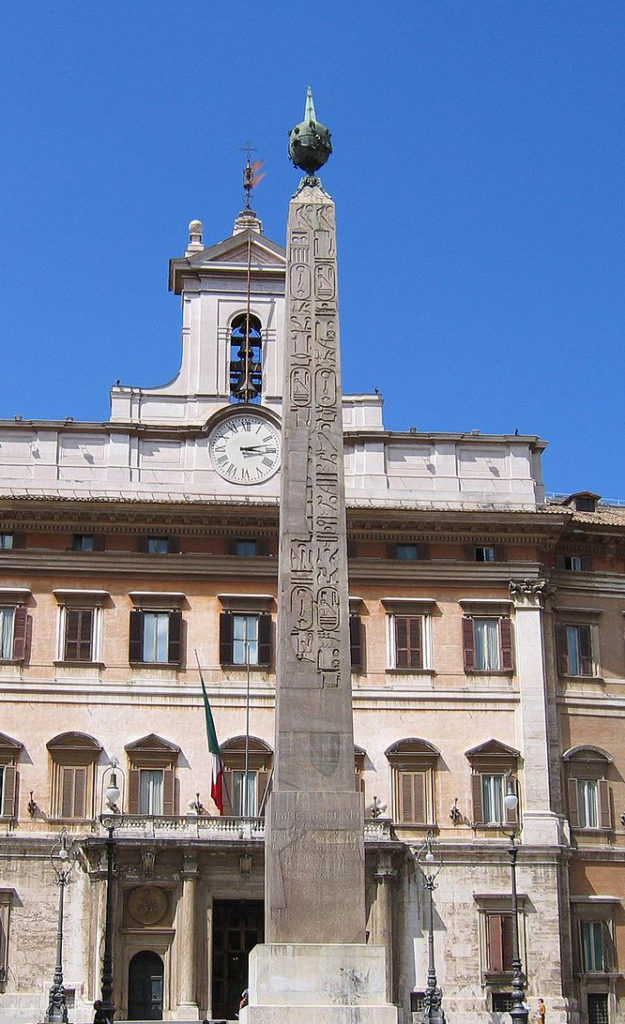
The MACUTEO and MATTEIANO OBELISKS were originally a pair located at the Temple of Ra in Heliopolis. Both were brought to Rome and installed in front of the Temple of Isis. They were rediscovered in 1373 and the former was erected in Piazza Macuta. It was relocated in 1711 to the front of the Pantheon by order of Pope Clement XI, over a fountain by Filippo Barigioni. The Matteiano Obelisk was erected east of Santa Maria in Aracoeli on the Capitoline, but moved to Villa Celimontana after Michelangelo redesigned the square in the late 16th century. Although both obelisks were originally 28 feet in height, due to damage, the Matteiano now stands 20 feet high.
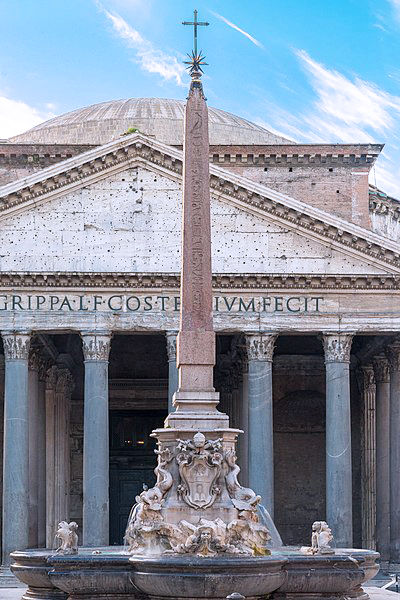

The DOGALI OBELISK stands 21 feet high and was originally one of a pair from Heliopolis, the other now in the Boboli Gardens in Florence. In Rome, it was erected at the Temple of Isis and was only found in 1883. Now it commemorates the 1887 Battle of Dogali. It was situated in its present location, near the ancient Baths of Diocletian in 1924.
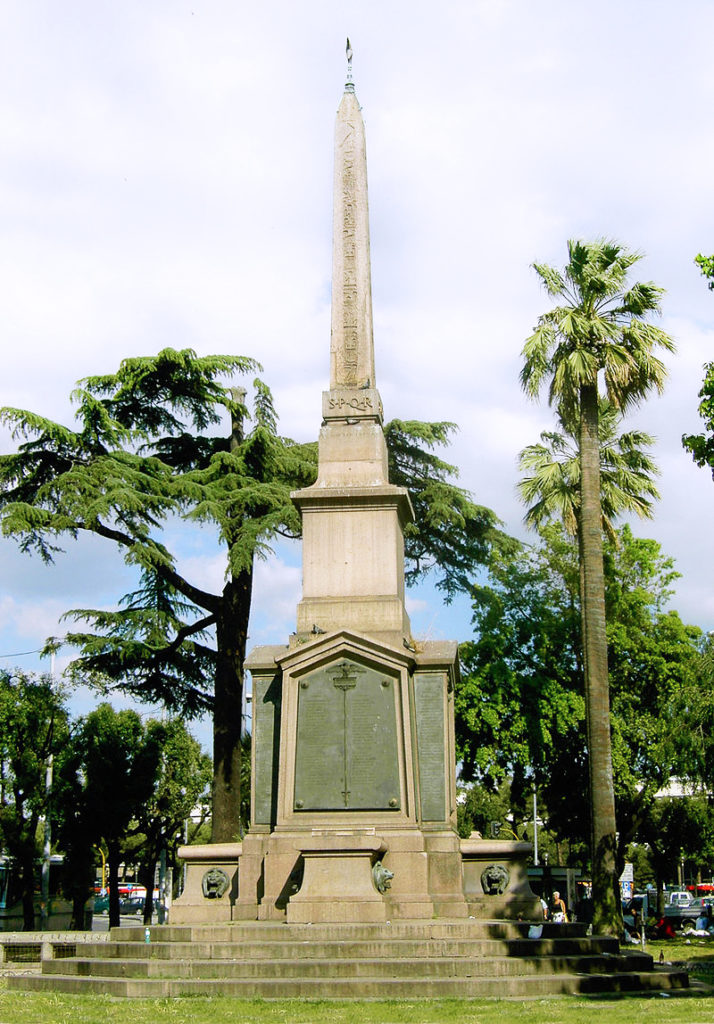
The OBELISK at PIAZZA NAVONA was erected at the Temple of Serapis, then moved to the Circus of Maxentius. In the late 1630s it was almost shipped abroad to an English Lord. Pope Urban VIII stepped in and disallowed its export. It was erected in Piazza Navona atop Bernini’s Fontana dei Quattro Fiumi in 1651 and stands 54 feet high, but it is nearly 100 feet from the base of the fountain to top of the monument.
Dolce di Pasqua – Easter Desserts
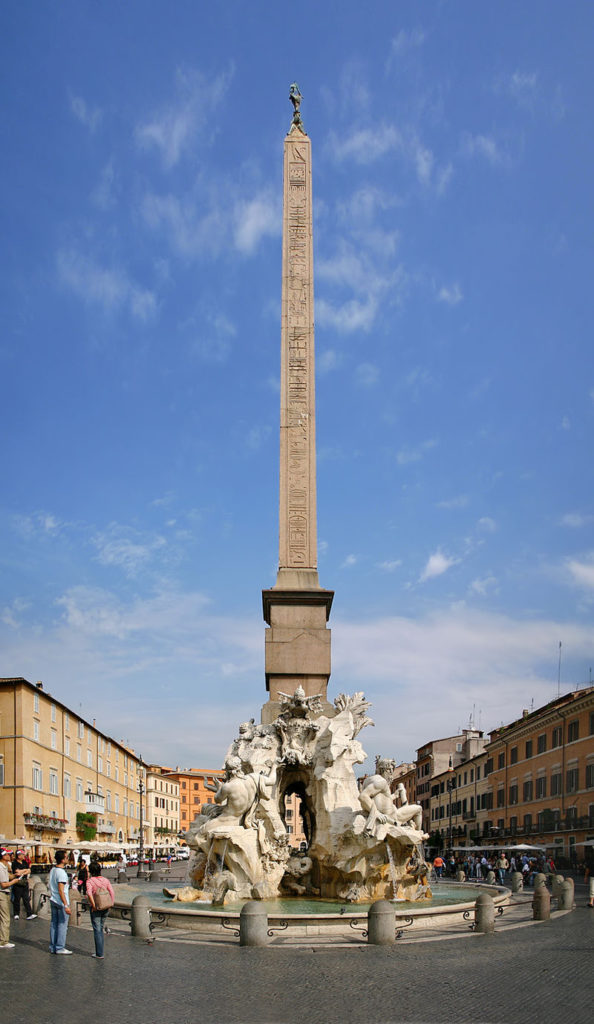
The OBELISKS at PIAZZA DELL’ESQUILINO and PIAZZA DEL QUIRINALE were originally erected on the eastern flank of the Mausoleum of Augustus. Both were rediscovered in 1527 and each stand 48 feet high. One was erected by 1587 by Pope Sixtus V behind Santa Maria Maggiore Piazza dell’Esquilino. The other was not placed on Quirinal Hill until two centuries later by Pope Pius VI.
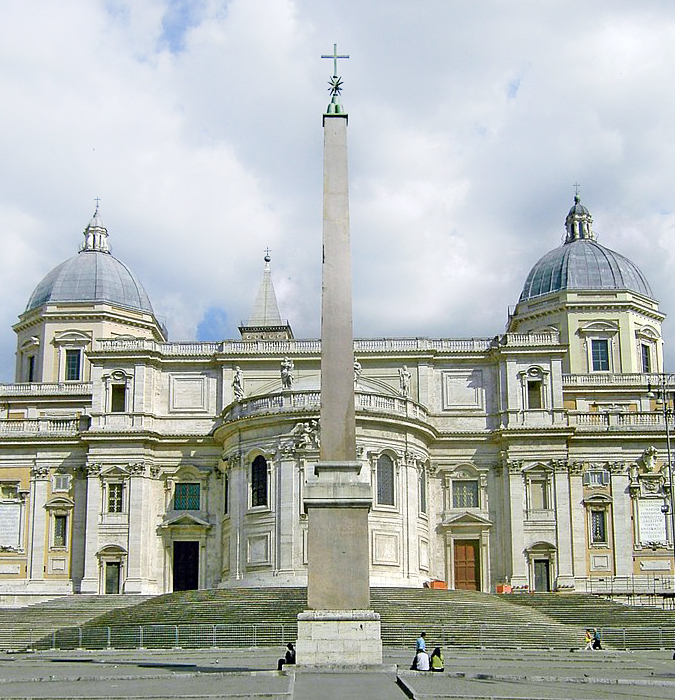
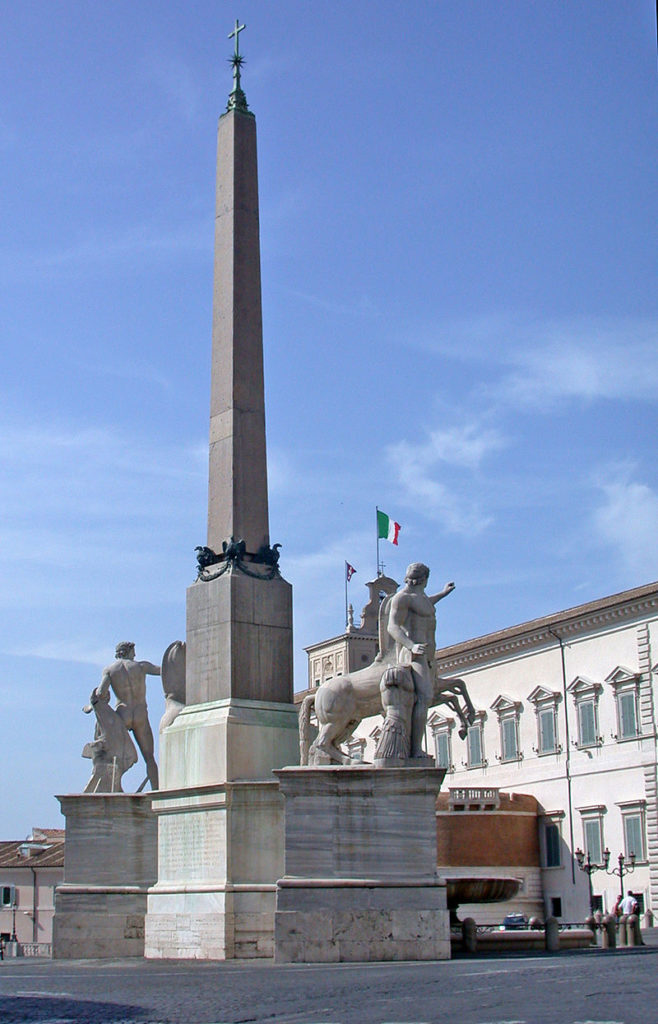
The SALLUSTIANO OBELISK is located above the Spanish Steps. It was erected in 1789 by Pope Pius VI in front of the Church of Trinità dei Monti. Although ancient, it was constructed under the reign of Emperor Aurelian during the third century AD and is a copy of the Flaminio Obelisk, although it is 22 feet shorter.
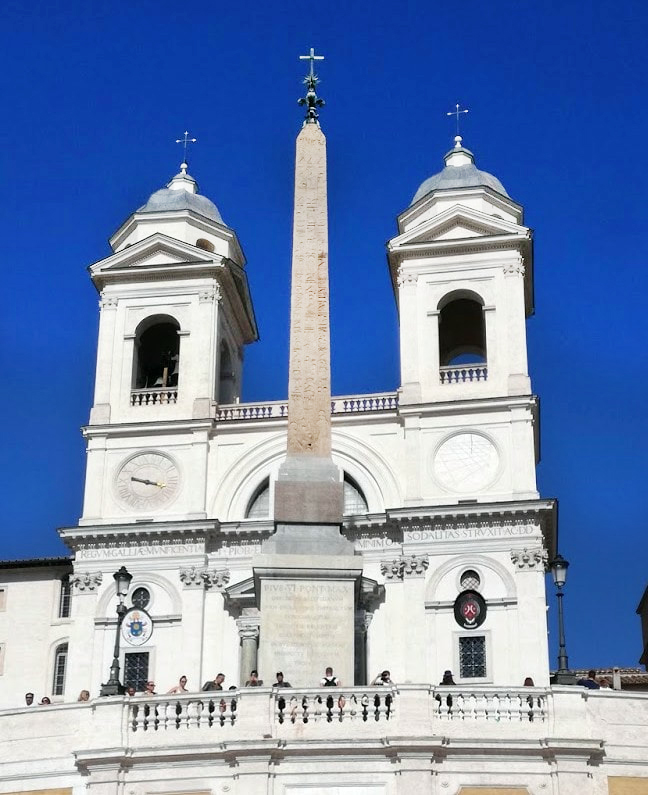
The 31 foot tall PINCIANO OBELISK on Pincian Hill did not come from Egypt, but has certainly been moved the most during its existence. It was commissioned by Emperor Hadrian and originally erected in Tivoli for the Tomb of Antinous. It was moved to Rome by Elagabalus during his short reign in the early third century to decorate Circus Varianus. Found in the 16th century near the Porta Maggiore, it was moved to the Palazzo Barberini, then to the Vatican by Pope Clement XIV. It was finally erected on the Pincian by Pope Pius VII in 1822, where it remains to this day.
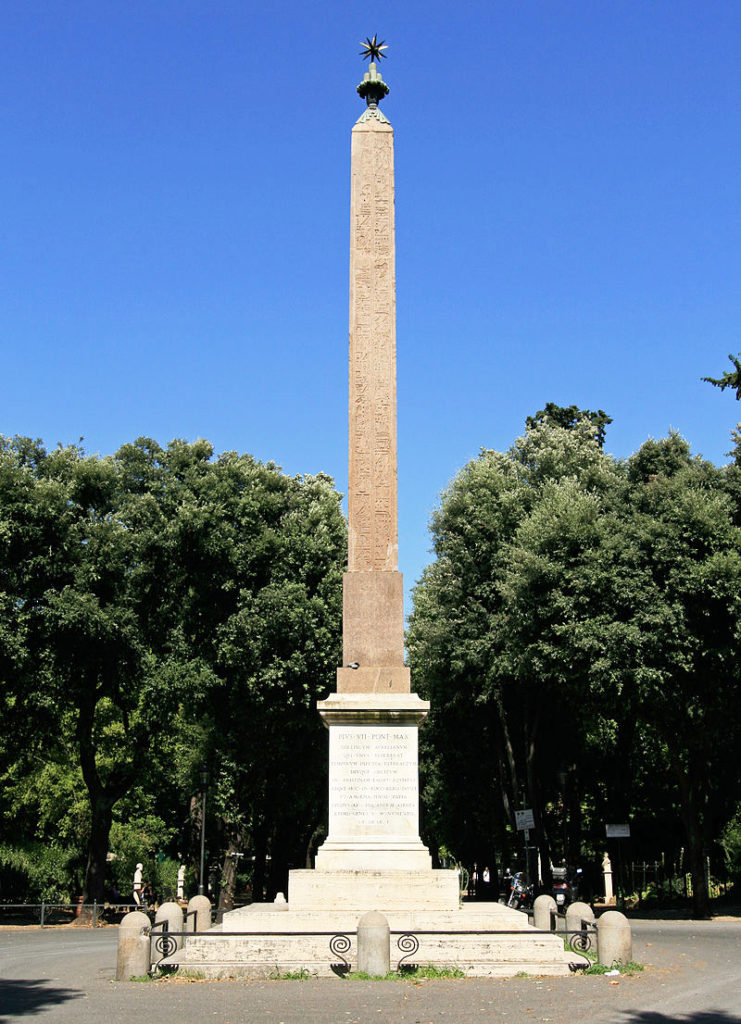
In Sicily, the ELEPHANT STATUE has been the symbol of Catania for more than one thousand years. An Egyptian obelisk sits atop the ancient volcanic stone elephant. Called u Liotru in the local dialect, the statue was believed to possess magical powers, including the ability to predict the eruptions of nearby Mount Etna. In 1737, the mysterious elephant was placed in the city’s main piazza with an equally mysterious and ancient Egyptian obelisk set atop the pachyderm. U Liotru points towards the city’s cathedral, symbolically protecting it, while a globe and a cross sit on top of the obelisk.
